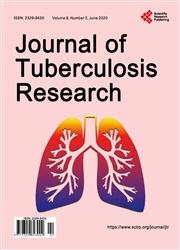Identifying Factors that Affect the Probability of Being Cured from MDR-TB Disease, KwaZulu-Natal, South Africa: A Competing Risks Analysis
引用次数: 1
Abstract
Setting: Four decentralised sites are located in rural areas and one centralised hospital in KwaZulu-Natal province, South Africa. Objective: To analyse risk factors associated with multidrug-resistant tuberculosis (MDR-TB) using competing risks analysis. Understanding factors associated with MDR-TB and obtaining valid parameter estimates could help in designing control and in-tervention strategies to lower TB mortality. Method: A prospective study was performed using a competing risk analysis in patients receiving treatment for MDR-TB. The study focused on 1542 patients (aged 18 years and older) who were diagnosed of MDR-TB between July 2008 and June 2010. Time to cure MDR-TB was used as the dependent variable and time to death was the competing risk event. Results: The Fine-Gray regression model indicated that baseline weight was highly significant with sub-distribution hazard ration (SHR) = 1.02, 95% CI: 1.01 - 1.02. This means that weight gain in a month increased chances of curing MDR-TB by 2%. Results show that lower chances to cure MDR-TB were among patients between 41 to 50 years compared to those patients who were between 18 to 30 years old (SHR = 0.80, 95% CI: 0.61 - 1.06). The chances of curing MDR-TB reduce mortality of patients due to TB disease, hence positive treatment outcomes leading to the goal of reducing or end TB deaths. Urgent action is required to improve the coverage and quality of diagnosis, treatment and care for people with drug-resistant TB.确定影响耐多药结核病治愈可能性的因素,夸祖鲁-纳塔尔省,南非:竞争风险分析
环境:四个分散的地点位于农村地区,一个集中的医院位于南非夸祖鲁-纳塔尔省。目的:应用竞争风险分析方法分析耐多药结核病(MDR-TB)的相关危险因素。了解与耐多药结核病相关的因素并获得有效的参数估计有助于设计控制和干预策略,以降低结核病死亡率。方法:采用竞争风险分析对接受耐多药结核病治疗的患者进行前瞻性研究。该研究的重点是2008年7月至2010年6月期间被诊断为耐多药结核病的1542名患者(年龄在18岁及以上)。以耐多药结核病治愈时间为因变量,死亡时间为竞争风险事件。结果:细灰回归模型显示,基线体重极显著,亚分布危险比(SHR) = 1.02, 95% CI: 1.01 ~ 1.02。这意味着一个月内体重增加会使耐多药结核病的治愈几率增加2%。结果显示,与18至30岁的患者相比,41至50岁的患者治愈耐多药结核病的机会较低(SHR = 0.80, 95% CI: 0.61 - 1.06)。治愈耐多药结核病的机会降低了结核病患者的死亡率,因此积极的治疗结果导致减少或终止结核病死亡的目标。需要采取紧急行动,提高对耐药结核病患者的诊断、治疗和护理的覆盖面和质量。
本文章由计算机程序翻译,如有差异,请以英文原文为准。
求助全文
约1分钟内获得全文
求助全文

 求助内容:
求助内容: 应助结果提醒方式:
应助结果提醒方式:


